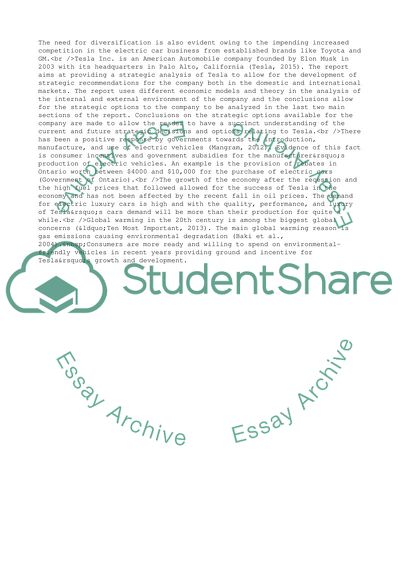Cite this document
(Tesla Strategic Analysis Report Example | Topics and Well Written Essays - 4500 words, n.d.)
Tesla Strategic Analysis Report Example | Topics and Well Written Essays - 4500 words. https://studentshare.org/business/1868562-tesla-strategic-analysis-report
Tesla Strategic Analysis Report Example | Topics and Well Written Essays - 4500 words. https://studentshare.org/business/1868562-tesla-strategic-analysis-report
(Tesla Strategic Analysis Report Example | Topics and Well Written Essays - 4500 Words)
Tesla Strategic Analysis Report Example | Topics and Well Written Essays - 4500 Words. https://studentshare.org/business/1868562-tesla-strategic-analysis-report.
Tesla Strategic Analysis Report Example | Topics and Well Written Essays - 4500 Words. https://studentshare.org/business/1868562-tesla-strategic-analysis-report.
“Tesla Strategic Analysis Report Example | Topics and Well Written Essays - 4500 Words”. https://studentshare.org/business/1868562-tesla-strategic-analysis-report.


